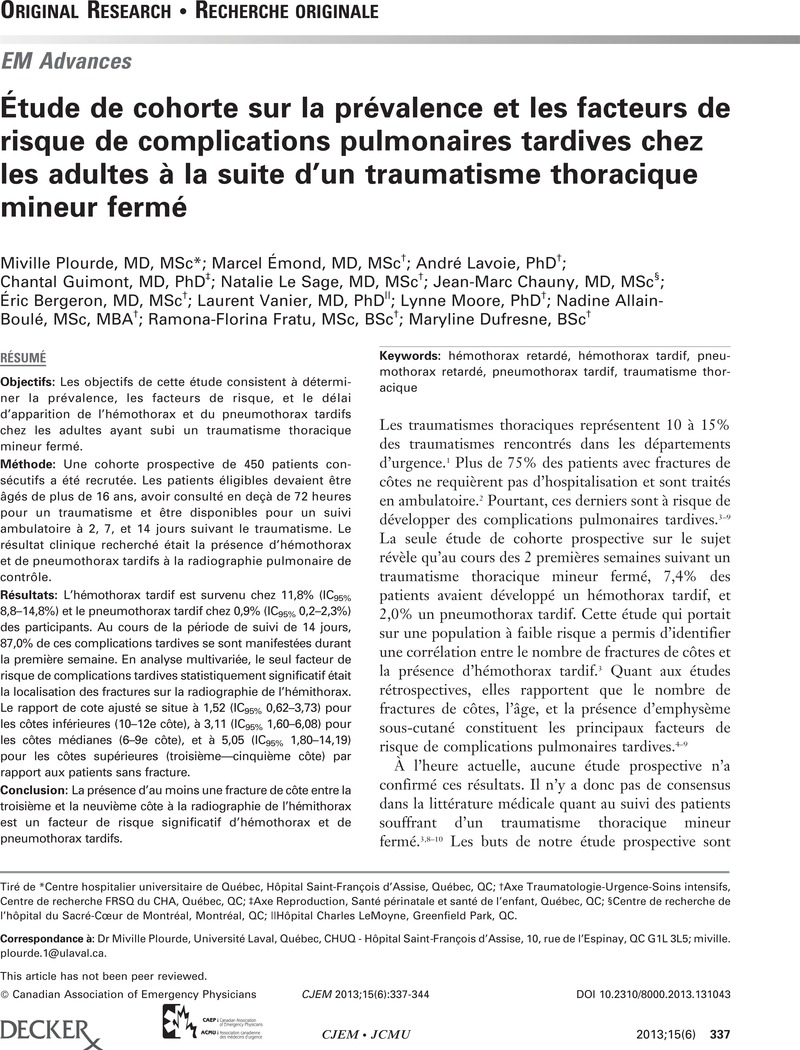Crossref Citations
This article has been cited by the following publications. This list is generated based on data provided by Crossref.
Émond, Marcel
Sirois, Marie-Josée
Guimont, Chantal
Chauny, Jean-Marc
Daoust, Raoul
Bergeron, Éric
Vanier, Laurent
Camden, Stephanie
and
Le Sage, Natalie
2015.
Functional Impact of a Minor Thoracic Injury.
Annals of Surgery,
Vol. 262,
Issue. 6,
p.
1115.
Émond, Marcel
Guimont, Chantal
Chauny, Jean-Marc
Daoust, Raoul
Bergeron, Éric
Vanier, Laurent
Moore, Lynne
Plourde, Miville
Kuimi, Batomen
Boucher, Valérie
Allain-Boulé, Nadine
and
Le Sage, Natalie
2017.
Clinical prediction rule for delayed hemothorax after minor thoracic injury: a multicentre derivation and validation study.
CMAJ Open,
Vol. 5,
Issue. 2,
p.
E444.
Chokshi, Tanvi
Theodosopoulos, Alexandra
Wilson, Ethan
Ysit, Michael
Alhadi, Sameir
and
Ranasinghe, Leonard
2021.
A Case Report of Delayed Hemothorax Complicated by Fibrothorax.
Asploro Journal of Biomedical and Clinical Case Reports,
Vol. 4,
Issue. 3,
p.
184.





